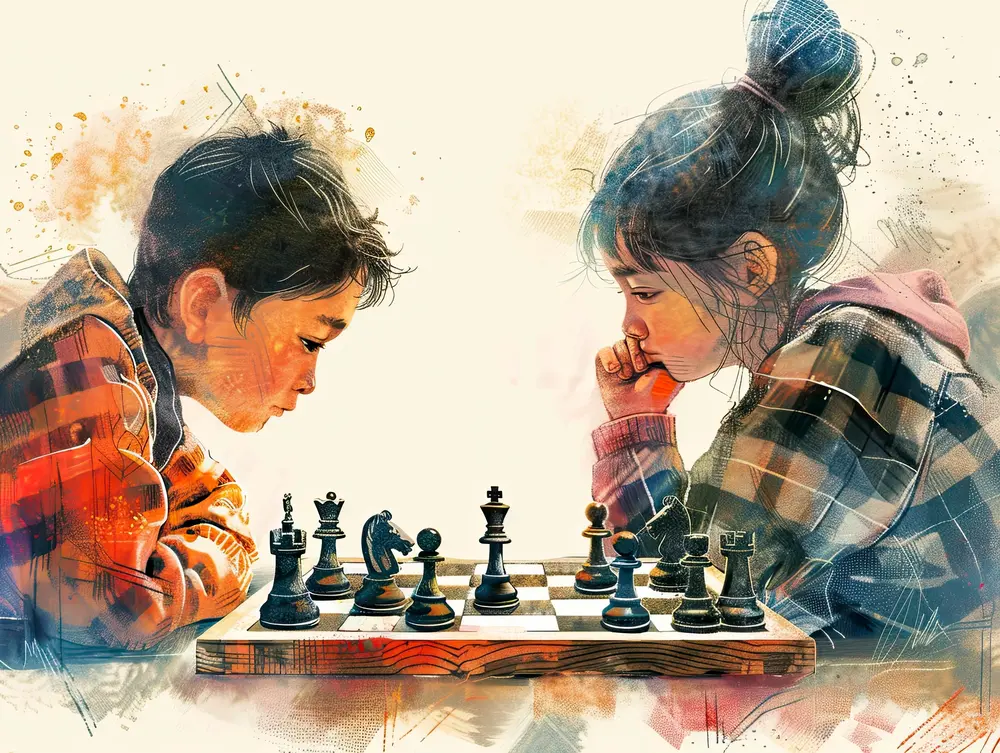
How to Learn Chess: Basic Rules of Chess You Must Know
Read the best online guide on how to learn chess. Learn the basic rules of chess, beginner moves & tips to master the game and play like a pro.
For millennia, many people have been attracted to chess. Originating in ancient India, it has evolved into a globally popular pastime, enjoyed by millions of players of all skill levels.
If you're wondering how to learn chess, this timeless game offers endless opportunities to develop your skills and strategies.
Whether you're a complete beginner or someone looking to sharpen your skills, understanding the basic rules of chess is the foundation for success.
Learning chess offers a wide number of benefits that go beyond the board. It develops critical thinking, improves problem-solving abilities, and develops patience. For young learners, it aids in cognitive development, while adults can use it to keep their minds agile. Chess appeals to players of all ages and backgrounds. Its universal nature bridges language and cultural barriers, making it a timeless quest. Mastering the basics opens the door to developing critical thinking skills and, most importantly, lays the groundwork for delving into advanced strategies. The chessboard is the battlefield where all the movement unfolds. It is made up of 64 squares in an 8x8 grid that alternate between dark and light shades of color. Proper board orientation is crucial: the bottom-right corner should always be a light (mostly white) square Each square has a unique coordinate, combining letters (a-h) for the column and numbers (1-8) for the row. For example, the square at the bottom left side is A1. Familiarizing yourself with the board layout is a key step in learning chess. Pawns move forward one square (two squares on their first move) and capture diagonally. The Importance of pawns in chess is quite unique. There is a special move called Promotion, where a pawn reaches the opponent's territory and can be upgraded to different chess pieces like queen, rook, bishop, or knight. Rooks move horizontally or vertically on chessboard. Knights move in an "L" shape. Knights are the only one who are capable of jumping over other chess pieces. Bishops move diagonally across the board. The most powerful piece, capable of moving horizontally, vertically, and diagonally. The King is the most key piece in chess. It can move one square at a time. Castling involves a King and Rook. In this move, the king moves two squares towards the rook, while the rook moves past the king. En passant refers to capturing an enemy pawn on the same rank as an adjacent file after making an initial two-square advance. Mastering these moves is necessary for playing chess. To set up the chessboard, place the pieces as follows: Ensuring the correct setup is a vital part of starting any game. The main goal is to checkmate King. Plan your moves to trap it, so it cannot escape capture. Players can move one piece at a time. Some exceptions, like castling, involve moving two pieces simultaneously. Whenever a piece moves to a square controlled by an opponent's piece, it captures and takes that piece off the board. Occur when a player has no legal moves but is not in check, resulting in a draw This can also occur due to repetition of moves, insufficient material to checkmate, or agreement between players. Mastering a chess moves guide will help you progress from a beginner to a confident player. Basic chess rules for beginners are mentioned below: Following chess tips for beginners is a practical approach for how to learn chess effectively. In the digital age, countless resources are available to help you improve: Regular practice using these resources will significantly enhance your skills. You can grasp the basics in a few hours, but transitioning to advance levels requires consistent practice, strategy building & patience. The Italian Game and Queen’s Gambit are excellent choices for their simplicity and focus on piece development. Practice regularly and revisit tutorials to reinforce your understanding. Play chess, review your chess gameplay, and learn from experienced players. Benefits of chess are immeasurable as it is beyond a game in itself. It represents an experience of learning and thinking strategically. Skills developed from the game helps in the real world. While the learning curve may seem steep initially, patience and regular practice will unlock its vast potential.How to learn chess?
Understanding Chessboard
The Chess Pieces and Their Roles
Each player starts with 16 pieces:
Two special moves to note:
Setting Up the Game
Basic Rules of Chess
Objective
Turns
Captures
Special Scenarios
How to learn chess for Beginners
Resources to Learn and Practice Chess
FAQs
Q1: How much time does it require to learn chess?
Q2: What is the best opening for beginners?
Q3: What is the easiest way to remember chess rules?
Q4: How do I improve my chess skills?
Conclusion
Learning a beginner's guide to chess, you’ll set yourself on the path to becoming a formidable player. So, grab a board, challenge a friend, and let the games begin!
